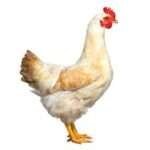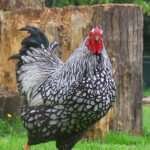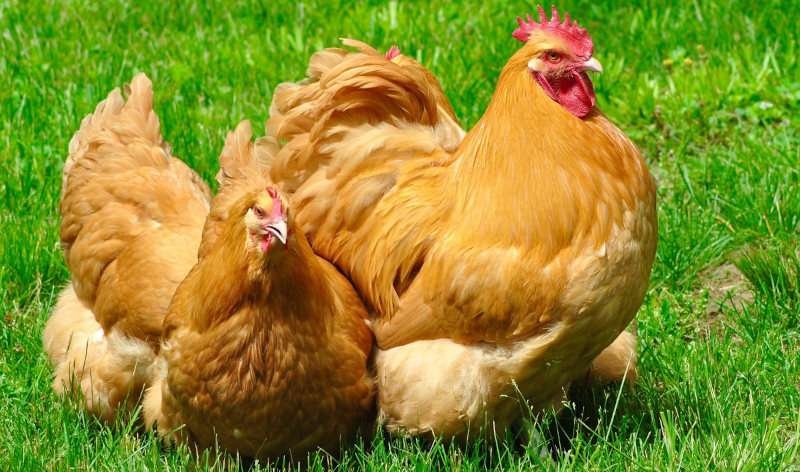
A gentle giant in the poultry world, Orpington Chickens are a fantastic dual purpose bird with a friendly temprament and look like a ball of feathers roaming your backyard! If you’re a beginner looking to embark on this exciting journey, Orpington Chickens are a breed you should definitely consider. With their charming personalities and manageable care requirements, these gentle giants make an ideal choice for novice chicken keepers.
History and Origin of Orpington Chickens
To truly understand and appreciate Orpington Chickens, we must delve into their rich history. The story of this beloved breed begins in the late 1800s in Orpington, a small town in Kent, England. It was here that a visionary poultry breeder named William Cook developed a new and exceptional breed of chicken.
Cook’s goal was to create a bird that excelled in both meat production and egg-laying capabilities, without compromising on temperament and appearance. Through careful and selective breeding, he gave rise to the Orpington Chicken we know and adore today.
The breed’s striking features and gentle disposition quickly caught the attention of poultry enthusiasts, leading to its introduction at poultry shows and exhibitions. The Orpington Chicken soon gained widespread popularity and crossed the Atlantic to the United States, where it found a warm reception among chicken keepers looking for a breed that combined beauty, productivity, and a friendly nature.
Today, Orpington Chickens come in several color varieties, each with its own unique charm. The Black, Blue, Buff, and White Orpingtons are the most commonly recognized, with their lustrous plumage and stately presence.
As a testament to their enduring appeal, Orpington Chickens remain a beloved choice for both backyard flocks and exhibition purposes. These birds are a charming addition to your family flock or a breed to showcase at poultry shows.
In the next sections of this guide, we’ll explore the physical characteristics, personality traits, care requirements, and more, providing you with all the information you need to confidently raise these delightful birds.
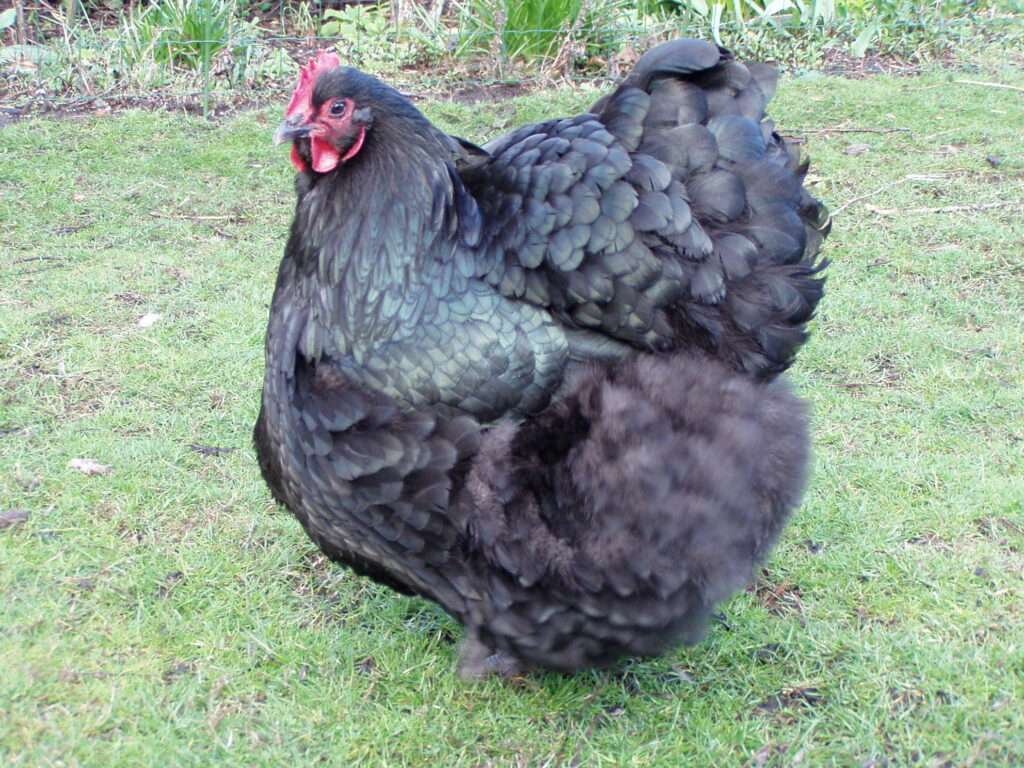
Physical Characteristics of Orpington Chickens
Orpington Chickens are truly a sight to behold with their majestic appearance and distinctive features. Here, we’ll explore the physical characteristics that set them apart and make them a standout breed.
- Size and Weight: One of the first things you’ll notice about Orpington Chickens is their size. They are large birds, with roosters weighing between 8 to 10 pounds (3.6 to 4.5 kg) and hens slightly smaller at 6 to 8 pounds (2.7 to 3.6 kg). Their substantial build gives them an impressive and imposing presence in any flock.
- Body Shape: Orpington Chickens have a broad, rounded body with a deep, well-rounded breast. Their short, sturdy legs and wide stance add to their solid appearance. The overall compactness of their body makes them look plump and well-fed.
- Color Varieties: While the Black, Blue, Buff, and White Orpingtons are the most commonly recognized. Breeders however, have also worked to develop other color varieties over the years. These include Lavender, Chocolate, and Cuckoo Orpingtons. Each color variation showcases a lovely contrast between the feathers, giving them an eye-catching allure.
- Soft Feathering: One of the distinctive traits of Orpington Chickens is their soft, fluffy plumage. Their feathers are almost like down, making them incredibly pleasant to touch. This feature not only adds to their appeal but also helps them cope well with colder climates.
- Single Comb and Reddish Wattles: Orpington Chickens boast a single comb that stands upright on their head, and their wattles are a vibrant shade of red. These features are typical of most chickens and are essential for regulating body temperature and displaying health.
- Docile Nature and Friendly Eyes: Their eyes, often described as ‘friendly,’ are bright and alert, yet reflect their gentle and calm temperament. Orpington Chickens are known for their docile nature, making them approachable and easy to handle, especially for beginners.
Orpington Chickens Personality and Temperament
Beyond their attractive appearance, the charm of Orpington Chickens lies in their delightful personalities and amiable nature. Here’s a closer look at why they make such excellent companions for first-time chicken keepers:
- Gentle Demeanor: Orpington Chickens are renowned for their sweet and gentle disposition. They are not known to be flighty or aggressive, which makes them perfect for families with children or those seeking a tranquil and enjoyable chicken-raising experience.
- Social Birds: These chickens are incredibly sociable and enjoy interacting with both humans and other flock members. They are not solitary creatures and thrive in the company of their feathered friends.
- Easily Tamed: Orpingtons are relatively easy to tame, making them a great choice for beginners who may be unfamiliar with handling poultry. With a little patience and regular interaction, they quickly become accustomed to human presence and may even seek out affection.
- Lap Chicken Tendencies: Some Orpington Chickens have a reputation for being “lap chickens” – birds that enjoy being held or sitting on their owner’s lap. This endearing trait has made them a favorite among chicken enthusiasts seeking a deeper connection with their flock.
- Motherly Instincts: Hens of this breed are known for their excellent mothering instincts. If you allow them to hatch their eggs, they are dedicated and attentive mothers, diligently caring for their chicks and protecting them from harm.
As we continue our journey through this beginner’s guide to Orpington Chickens, we’ll explore their egg-laying capabilities, their care requirements, and more valuable information to help you become a confident and successful chicken keeper.
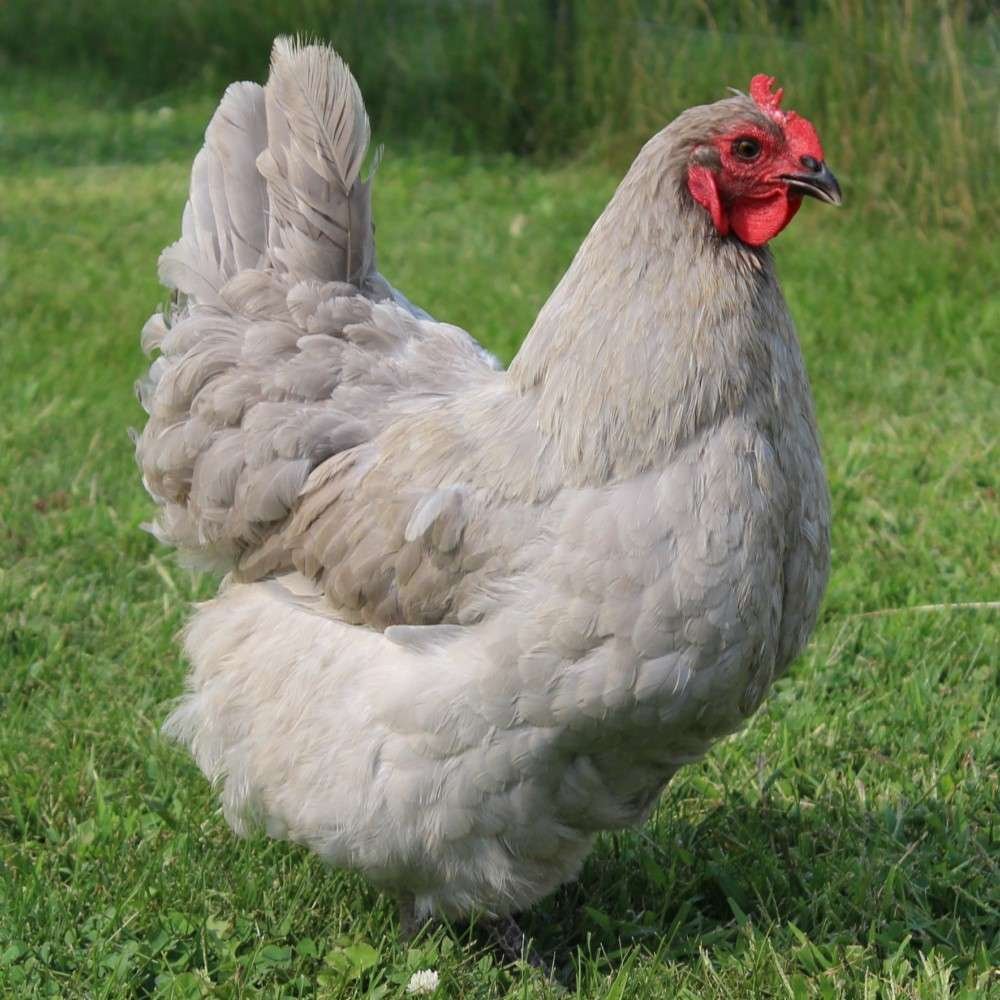
Egg Production and Broodiness
One of the appealing aspects of raising chickens is the prospect of enjoying fresh, homegrown eggs. Orpington Chickens do not disappoint in this regard. They are reliable layers with a few unique characteristics related to egg production.
- Egg-Laying Capacity: Orpington hens are moderate to good layers, producing approximately 3 to 4 large brown eggs per week on average. While they may not be the most prolific layers like some hybrid breeds, the quality and size of their eggs make them well worth the wait.
- Seasonal Variations: Like many chicken breeds, Orpingtons’ egg production can be influenced by the seasons and changes in daylight hours. During the spring and summer months, when daylight is longer, they tend to lay more consistently. In contrast, their egg-laying may decrease during the winter as daylight hours shorten.
- Broodiness: One of the unique traits of Orpington Chickens is their tendency to go broody. Broodiness refers to a hen’s instinct to sit on and hatch a clutch of eggs. While this trait is endearing if you want to raise chicks naturally, it can impact egg production. Broody hens may stop laying altogether until their brooding behavior passes.
Orpington Chickens Housing and Care Requirements
To ensure the health and happiness of your Orpington Chickens, providing them with suitable housing and proper care is essential. Here are some tips to consider:
- Coop and Run: Orpington Chickens require a spacious and secure coop to roam, roost, and lay their eggs comfortably. Aim for at least 3 to 4 square feet of coop space per bird and an additional 8 to 10 square feet of outdoor run space. Adequate space will prevent overcrowding and promote better flock dynamics.
- Bedding and Cleaning: Choose appropriate bedding material, such as straw, wood shavings, or sand, to keep the coop clean and dry. Regularly clean and replace the bedding to maintain a hygienic environment for your chickens.
- Feeding and Watering: Offer a balanced and nutritious chicken feed suitable for laying hens. Additionally, provide fresh, clean water daily to keep your flock hydrated and healthy.
- Protection from Predators: Ensure the coop and run are predator-proof to safeguard your chickens from potential threats like foxes, raccoons, and birds of prey. Use sturdy fencing and hardware cloth to cover openings.
- Ventilation and Lighting: Proper ventilation in the coop is vital to prevent moisture buildup and promote good air circulation. Additionally, consider providing supplemental lighting during the winter months to encourage consistent egg production.
Health and Common Health Issues
Orpington Chickens are generally hardy birds, but like any breed, they may be susceptible to certain health issues. Being attentive to their well-being and taking preventive measures can help keep your flock in good health.
- Routine Check-Ups: Schedule regular visits to a poultry-savvy veterinarian for check-ups and vaccinations to prevent common diseases and parasitic infestations.
- Parasite Control: Implement a routine parasite control program to protect your chickens from mites, lice, and worms.
- Signs of Illness: Familiarize yourself with common signs of illness in chickens, such as lethargy, decreased appetite, difficulty breathing, and changes in feather appearance.
- Quarantine New Birds: When introducing new birds to your flock, keep them in quarantine for a few weeks to ensure they are healthy and not carrying any contagious diseases.
Orpington Chickens Summary
Congratulations! You’ve now become well-acquainted with the delightful Orpington Chickens and their endearing characteristics. From their fascinating history to their gentle personalities, these birds are a joy to raise, especially for beginners in the world of chicken keeping.
Remember to provide them with a comfortable and secure living environment, a balanced diet, and regular care to ensure their health and happiness. In return, your Orpingtons will reward you with companionship, delightful eggs, and countless heartwarming moments.
As you continue your journey as a chicken enthusiast, never hesitate to seek advice from fellow chicken keepers or poultry forums. Building a supportive community can enrich your experience and help you navigate any challenges that may arise.
So, go ahead and welcome these fluffy, friendly chickens into your life. Whether you’re a hobbyist, a backyard homesteader, or an aspiring poultry show exhibitor, the Orpington Chicken is sure to bring you endless delight and satisfaction in your chicken-raising adventure! Happy chicken keeping!


